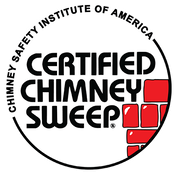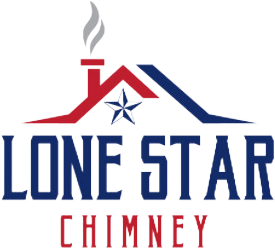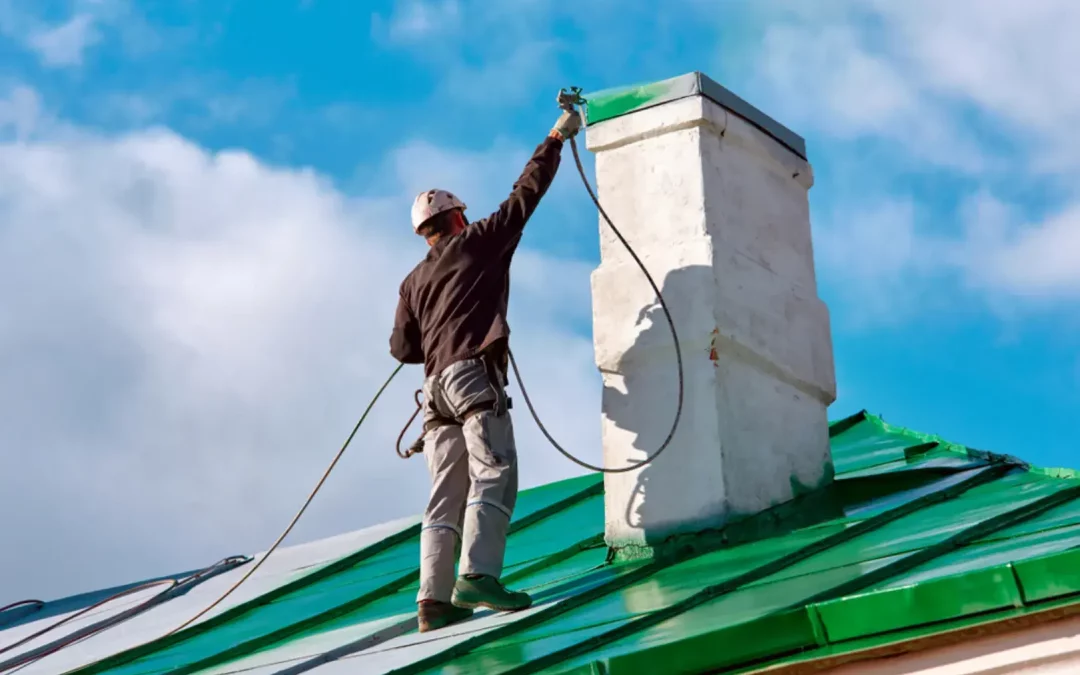In the heart of Houston, where the climate can shift from humid summers to occasional chilly winters, propane fireplaces offer a convenient and efficient heating solution for many homeowners. However, the safety and efficiency of these systems depend significantly on one often-overlooked component: the chimney. Regular chimney inspection and timely chimney repair aren’t just maintenance tasks—they’re essential safety measures that protect Houston homes from potential hazards.
The unique challenges of Houston’s climate, combined with the specific requirements of propane fireplace systems, make specialized chimney care not just recommended but necessary. From moisture damage during hurricane season to the specific venting requirements of propane systems, Houston homeowners face particular challenges that demand attention.
This comprehensive guide explores why chimney inspection and chimney repair should be prioritized by Houston homeowners with propane fireplaces, how often these services should be performed, what they involve, and the potential consequences of neglect.
Understanding Propane Fireplace Chimneys in Houston’s Climate
Propane fireplaces have become increasingly popular in Houston homes for their convenience, efficiency, and clean-burning properties. Unlike traditional wood-burning fireplaces, propane units produce fewer emissions and require less extensive chimney systems. However, this doesn’t mean their chimneys require less attention—in fact, the opposite is often true.
Propane fireplace chimneys in Houston face unique challenges due to the region’s climate patterns. The city’s notorious humidity, combined with seasonal heavy rainfall and the occasional freeze, creates conditions that can accelerate chimney deterioration. The Gulf Coast’s salty air can also contribute to accelerated corrosion of metal components within chimney systems.
When propane burns, it produces water vapor and carbon dioxide. In a properly functioning chimney system, these byproducts are safely vented outside. However, if the chimney becomes compromised due to damage or blockage, these gases—particularly carbon monoxide—can back up into the home, creating serious health risks.
Common chimney issues specific to Houston propane fireplaces include:
- Moisture intrusion during heavy rain events, leading to liner damage
- Corrosion of metal components due to humidity and salt air
- Condensation formation during temperature fluctuations
- Accelerated deterioration of masonry during freeze-thaw cycles
- Biological growth such as mold and algae in humid conditions
- Debris accumulation from Houston’s abundant tree canopy
- Storm damage from hurricane-force winds
Each of these factors makes chimney repair and inspection particularly important for Houston homeowners. The city’s unique climate conditions mean that even minor chimney issues can quickly escalate into major problems if left unaddressed.
The Safety Implications of Neglected Chimney Maintenance
The consequences of neglecting chimney inspection and chimney repair extend far beyond aesthetic concerns or minor performance issues. For propane fireplace users in Houston, these consequences can be potentially life-threatening.
Carbon monoxide poisoning represents one of the most serious risks associated with improperly maintained propane fireplace chimneys. This odorless, colorless gas can cause symptoms ranging from headaches and dizziness to unconsciousness and death. According to the Centers for Disease Control and Prevention, more than 400 Americans die from unintentional carbon monoxide poisoning annually, with many cases linked to malfunctioning heating systems.
For Houston homeowners, the risk factors are multiplied by several local conditions:
- Seasonal temperature fluctuations that can cause chimney damage through expansion and contraction
- Hurricane season threats that can directly damage chimney structures
- High humidity levels that contribute to internal deterioration
- Short but intense cold snaps that lead to sudden, heavy fireplace use after months of inactivity
Beyond carbon monoxide concerns, neglected chimney systems can lead to:
- Fire hazards from creosote buildup (even propane fireplaces can develop some creosote deposits)
- Structural damage to the home from water intrusion
- Decreased fireplace efficiency, leading to higher propane consumption
- Poor indoor air quality from improper venting
- Expensive emergency chimney repair costs that could have been avoided with routine maintenance
Professional chimney inspections can identify these issues before they become critical safety hazards. When problems are detected early, chimney repair interventions are typically less extensive and less costly.
Components of a Professional Chimney Inspection for Propane Systems
A thorough chimney inspection for propane fireplaces in Houston should address multiple components and potential problem areas. Professional chimney technicians typically follow a structured process based on industry standards established by the National Fire Protection Association (NFPA).
The NFPA recognizes three levels of chimney inspection, each progressively more detailed:
Level 1 Inspections: These are basic annual inspections that examine readily accessible portions of the chimney exterior, interior, and accessible portions of the appliance and connection. For Houston propane fireplace owners, Level 1 inspections should be conducted annually, ideally before the winter season begins.
Level 2 Inspections: More comprehensive than Level 1, these inspections are recommended when any changes are made to the system, such as replacing the fireplace or liner. They’re also advised after severe weather events—particularly relevant in hurricane-prone Houston. Level 2 inspections often involve camera equipment to examine internal chimney surfaces.
Level 3 Inspections: The most thorough option, Level 3 inspections may involve removing certain chimney components or adjacent building materials to fully assess hidden damage. These are typically recommended when serious hazards are suspected or significant damage has occurred.
During these inspections, chimney professionals will examine:
- The integrity of the chimney cap and crown
- The condition of the flashing where the chimney meets the roof
- Signs of water damage or moisture penetration
- The chimney liner for cracks, deterioration, or corrosion
- Proper connection between the propane fireplace and chimney
- Adequate clearance from combustible materials
- Proper drafting and venting function
- Evidence of previous water or fire damage
- Signs of structural shifting or foundation issues affecting the chimney
For Houston homeowners, special attention should be paid to water-related issues, given the region’s precipitation patterns. Water intrusion is particularly problematic for propane fireplace chimneys, as it can damage internal components and create conditions for dangerous backdrafting.
Common Chimney Repair Needs for Houston Propane Fireplaces
When inspection reveals problems, prompt chimney repair is essential to maintain safety and functionality. For propane fireplace systems in Houston, several repair needs commonly arise due to the unique combination of climate conditions and fuel type.
Crown and Cap Repairs
The chimney crown and cap form the first line of defense against Houston’s heavy rainfall. When these components become damaged, water can easily enter the chimney system, leading to extensive internal damage. Signs that crown or cap chimney repair may be needed include:
- Visible cracks in the cement crown
- Rust on metal chimney caps
- Missing or damaged spark arrestors
- Water stains on interior chimney surfaces
Professional chimney repair for these components might involve applying crown sealant, replacing damaged caps, or in severe cases, completely rebuilding the crown. For Houston homes, selecting corrosion-resistant materials for these exposed components is particularly important due to the high humidity and occasional salt air exposure.
Flashing Repairs
Chimney flashing—the waterproof barrier where the chimney meets the roof—is critically important in Houston’s rainy climate. Damaged flashing allows water to penetrate the roof-chimney junction, potentially causing damage to both structures. Common flashing issues requiring chimney repair include:
- Rust or corrosion on metal flashing
- Separated or pulled-away flashing
- Improper installation following roof replacement
- Damaged sealant around flashing edges
Professional flashing chimney repair may involve resealing, replacing damaged sections, or installing new flashing with proper overlapping and waterproofing techniques.
Liner Repairs and Replacements
The chimney liner is particularly important for propane fireplaces, as it provides a smooth path for exhaust gases and helps prevent dangerous heat transfer to combustible materials. Houston’s humidity can accelerate liner deterioration, especially in older systems. Signs that liner chimney repair or replacement may be necessary include:
- Visible cracks or gaps in clay tile liners
- Corrosion in metal liners
- White staining (efflorescence) indicating water penetration
- Pieces of liner material found in the fireplace or at the chimney base
Professional chimney repair options may include:
- Resurfacing existing liners with specialized products
- Installing stainless steel liner systems
- Complete replacement of damaged clay tile liners
- Installation of insulation between the liner and chimney structure
For propane systems specifically, properly sized liners are critical for efficient operation and safety. Professional chimney repair technicians will ensure any replacement liner meets the specific requirements of the propane appliance.
Masonry Repairs
While many modern propane fireplaces utilize prefabricated chimney systems, homes with masonry chimneys require special attention to the brickwork and mortar. Houston’s occasional freeze-thaw cycles, though less common than in northern regions, can still cause significant damage over time. Common masonry issues requiring chimney repair include:
- Spalling (flaking) bricks
- Deteriorated mortar joints
- Leaning or tilting chimney structures
- Efflorescence (white staining) indicating water damage
Professional masonry chimney repair might involve tuckpointing (replacing deteriorated mortar), replacing damaged bricks, applying waterproofing sealants, or in extreme cases, partial or complete chimney rebuilding.
Venting System Optimization
Propane fireplaces require properly functioning venting systems to operate safely. In Houston’s variable climate, ensuring optimal draft conditions can sometimes be challenging. Issues that might require chimney repair or adjustment include:
- Backdrafting (where exhaust gases enter the home instead of exiting the chimney)
- Excessive condensation formation within the chimney
- Poor draw leading to inefficient combustion
- Improper clearances between venting components and combustible materials
Professional chimney repair specialists can adjust dampers, resize flue liners, install draft inducers, or make other modifications to ensure proper venting for propane systems in Houston’s specific atmospheric conditions.
Seasonal Timing for Chimney Inspection and Repair in Houston
Unlike colder regions where chimney use is concentrated in winter months, Houston’s milder climate means propane fireplaces might be used intermittently throughout the year, particularly during brief cold snaps. This usage pattern, combined with the region’s distinct weather seasons, influences the optimal timing for chimney inspection and repair.
Pre-Winter Inspections
The ideal time for annual chimney inspection in Houston is typically in early fall, before the first cold front of the season arrives. Scheduling inspection and any needed chimney repair during September or October offers several advantages:
- It ensures the system is safe before the primary usage season
- It allows sufficient time for any necessary chimney repair work before temperatures drop
- It avoids the rush of emergency service calls that often occur with the first cold snap
- It provides peace of mind during Houston’s unpredictable winter weather patterns
During pre-winter inspections, particular attention should be paid to ensuring proper venting function and checking for any damage that may have occurred during summer storms.
Post-Hurricane Season Assessments
For Houston homeowners, scheduling additional chimney inspection after major weather events is highly advisable. Hurricane season (June through November) can bring extreme winds and rainfall that may damage chimney systems. Even if no obvious external damage is visible, internal components could be affected.
Signs that post-storm chimney repair assessment may be needed include:
- New water stains on ceilings near the chimney
- Visible shifting or tilting of the chimney structure
- Debris visible in the fireplace or atop the chimney
- Changes in fireplace performance such as poor drafting
The sooner these assessments occur after severe weather, the easier it is to prevent secondary damage from developing.
Spring Maintenance
After the winter usage season, spring offers another opportune time for chimney inspection and maintenance. For propane fireplace owners in Houston, spring chimney repair and maintenance might focus on:
- Addressing any performance issues noticed during winter use
- Cleaning any light creosote accumulation
- Applying water repellent treatments before summer rains
- Repairing minor damage before hurricane season begins
This biannual approach to chimney care—with major inspection in fall and follow-up in spring—provides the most comprehensive protection for Houston propane fireplace systems.
The Cost-Benefit Analysis of Regular Chimney Maintenance
When considering the economics of chimney care, the financial equation strongly favors regular inspection and timely chimney repair over emergency interventions. For Houston homeowners with propane fireplaces, understanding this cost-benefit relationship helps prioritize this essential maintenance.
Regular inspection and maintenance typically involve modest, predictable costs. Basic Level 1 inspections are relatively inexpensive, and when combined with routine chimney repair such as crown sealing or minor mortar repair, the annual investment is manageable for most homeowners.
In contrast, emergency chimney repair or addressing severely neglected systems can involve costs many times higher. When problems are allowed to progress unchecked, what might have been a simple chimney repair can evolve into:
- Complete chimney rebuilding
- Extensive water damage remediation in surrounding home areas
- Foundation work if chimney settling has occurred
- Roof repairs due to water intrusion
- Liner replacement rather than simple repair
Beyond the direct financial costs, other compelling benefits of regular maintenance include:
- Improved energy efficiency and reduced propane consumption
- Extended lifespan of the fireplace system
- Enhanced home safety and reduced liability
- Prevention of indoor air quality issues
- Preservation of home value
For Houston homeowners specifically, properly maintained chimney systems also provide better protection during extreme weather events. Chimneys with compromised structural integrity are more likely to sustain significant damage during hurricanes or tropical storms.
The ultimate cost benefit, of course, is the protection of human life. Compared to the potential tragedy of carbon monoxide poisoning or house fires, the investment in regular chimney inspection and chimney repair is minimal.
DIY Monitoring Between Professional Chimney Inspections
While professional chimney inspection and chimney repair are irreplaceable, Houston homeowners can supplement these services with regular monitoring between professional visits. This vigilance helps identify potential problems early, often preventing minor issues from becoming major chimney repair emergencies.
Visual Chimney Checks
Homeowners should periodically examine visible chimney components, particularly after severe weather events. Key areas to monitor include:
- The chimney crown and cap for obvious damage
- The flashing for separation or rust
- The exterior masonry for cracks or spalling
- The chimney structure for any tilting or leaning
These visual inspections are best performed with binoculars from ground level rather than accessing the roof, which can be dangerous without proper safety equipment.
Interior Warning Signs
Inside the home, several indicators might suggest chimney problems requiring professional assessment:
- Water stains on ceilings or walls near the chimney
- White staining (efflorescence) on interior chimney surfaces
- Pieces of flue tile or debris in the fireplace
- Unusual odors when the fireplace is in operation
- Difficulty starting or maintaining fires
- Smoke entering the home rather than going up the chimney
Any of these signs warrants prompt professional chimney inspection and potential chimney repair.
Carbon Monoxide Detection
Perhaps the most important DIY safety measure for propane fireplace users is installing and maintaining carbon monoxide detectors. These devices should be placed:
- Near sleeping areas
- On each level of the home
- In proximity to the fireplace itself
Houston homeowners should test these devices monthly and replace batteries semi-annually (a good rule is to change batteries when adjusting clocks for daylight saving time).
Performance Monitoring
Pay attention to how the propane fireplace performs during operation. Changes in flame color, burning efficiency, or draft quality can indicate developing chimney issues. Blue flames generally indicate proper combustion, while yellow flames may suggest problems requiring chimney repair or adjustment.
Choosing a Qualified Chimney Repair Professional in Houston
Finding the right professional for chimney inspection and chimney repair is critically important for propane fireplace safety. Houston homeowners should seek technicians with specific qualifications and experience.
When selecting a chimney professional, look for:
Industry Credentials
Reputable chimney repair technicians should hold certifications from recognized industry organizations such as:
- Chimney Safety Institute of America (CSIA)
- National Fireplace Institute (NFI) with specific propane certification
- National Chimney Sweep Guild (NCSG) membership
These credentials indicate the technician has received specialized training and adheres to established safety and technical standards.
Local Experience
Given Houston’s unique climate challenges, choosing chimney repair professionals with specific local experience is advantageous. These technicians will be familiar with:
- Common regional chimney problems
- Local building codes and regulations
- Appropriate materials and techniques for Gulf Coast conditions
- Houston’s inspection requirements and standards
Comprehensive Services
The best chimney professionals offer a full spectrum of services, from inspection through chimney repair and maintenance. This comprehensive approach ensures continuity of care and allows for development of long-term maintenance strategies specific to each home’s needs.
Insurance and Licensing
Verify that any chimney repair service provider carries appropriate insurance coverage and any required local licenses. This protects homeowners from liability in case of accidents during service calls and ensures the company meets basic business operation standards.
Documentation and Reporting
Professional chimney inspection should result in detailed documentation of findings and recommendations. Quality chimney repair providers will:
- Provide written inspection reports with photographs
- Clearly explain any needed chimney repair in understandable terms
- Offer prioritized recommendations based on safety concerns
- Provide detailed estimates for recommended work
- Maintain records of previous service for reference
This documentation creates a valuable history of the chimney system that informs future maintenance decisions.
Read more:


